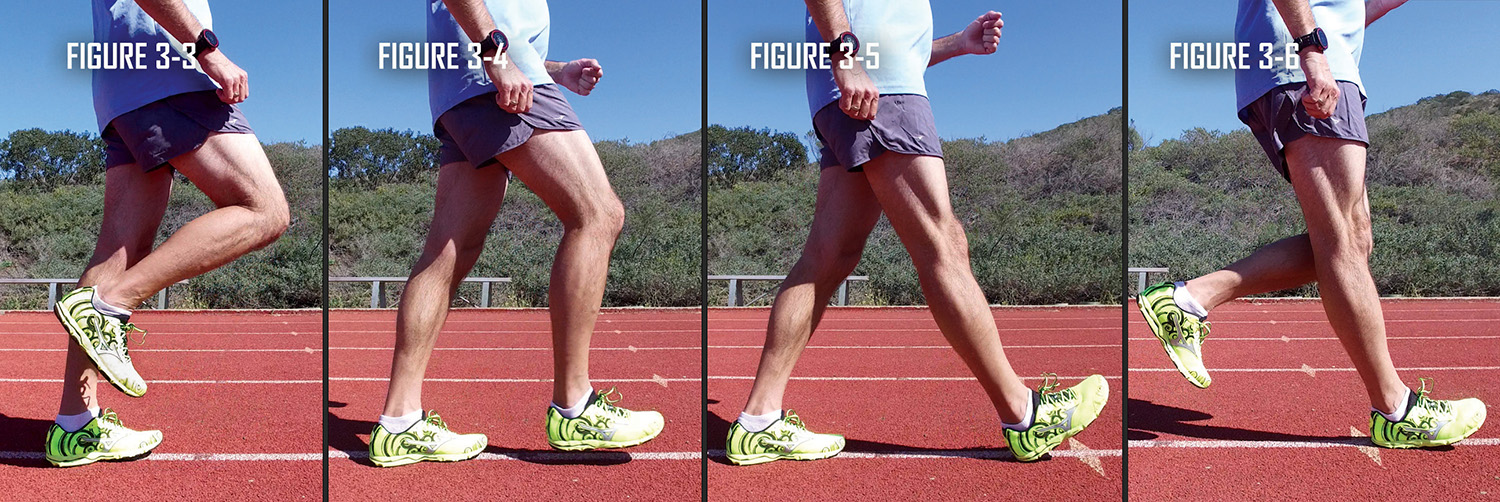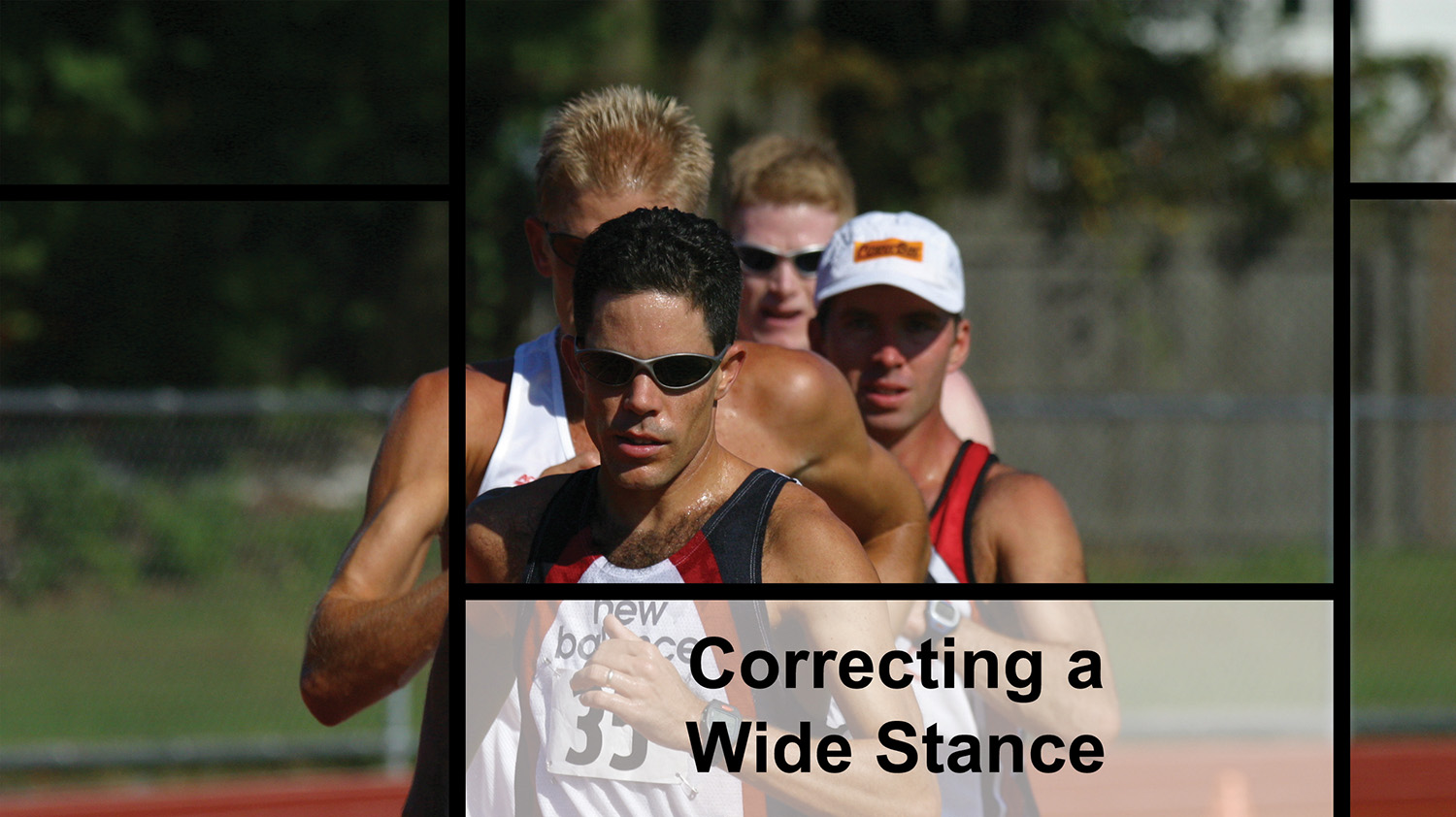
When pedestrians walk quickly, they rarely change their technique; they merely walk with a more exaggerated stride at a faster cadence (Figure 13-1). This gets them only so far or fast. Race walkers (Figure 13-2), in contrast, change many aspects of their stride, most notably adding a forward drive of the hip as the leg swings forward. Most race walkers who walk with a wide stance do so because they do not rotate their hips forward and therefore inward. Since the hip cannot move forward in a straight line, it must rotate inward as it rotates forward. As it does, it causes the foot to land along a straight line.
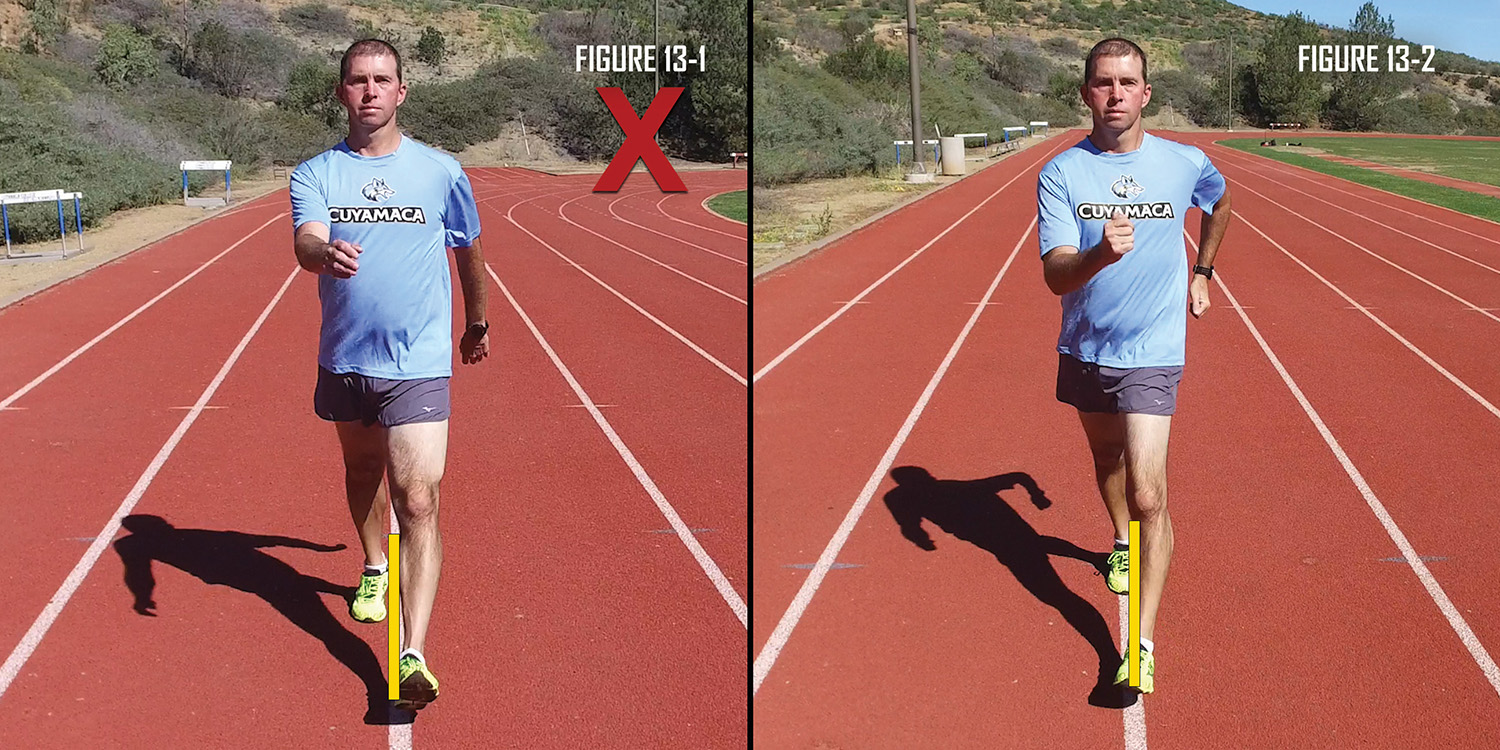
To correct a wide stance, you can perform any of the corrections for incorrect hip rotation as taught in chapter 8.
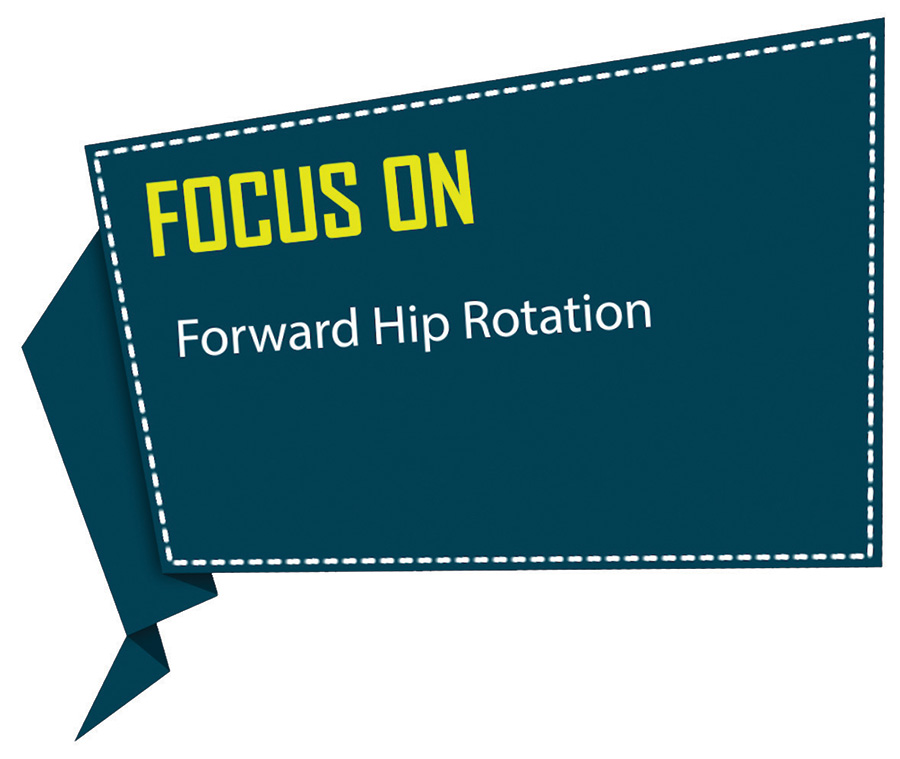
It may seem that we keep repeating hips, hips, and more hips, but they are key to many problems with race walking technique. If your feet are not landing in a straight line, it is probably due to a lack of forward hip rotation. When the hip rotates forward, it also rotates inward, causing the feet to land in a straight line. Concentrate on driving your hip forward and your foot placement naturally straightens out.
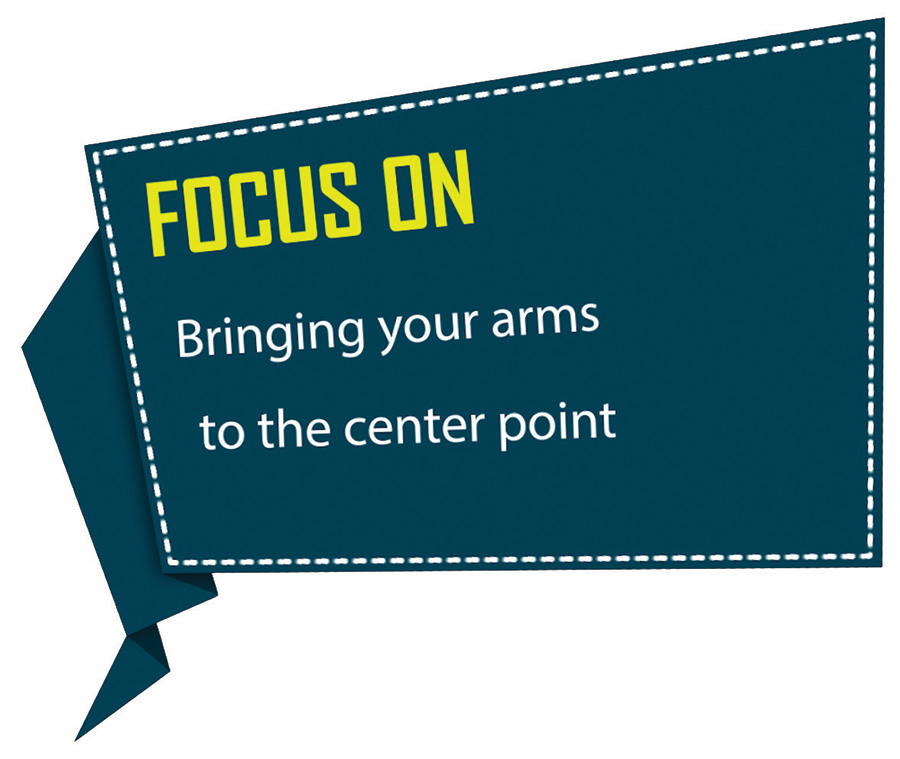
Focus on bringing your arms to the center point in front of your body in line with your sternum as shown in Figures 13-3 & 13-4. Synchronize the placement of your feet, so that they land “underneath” your hands.
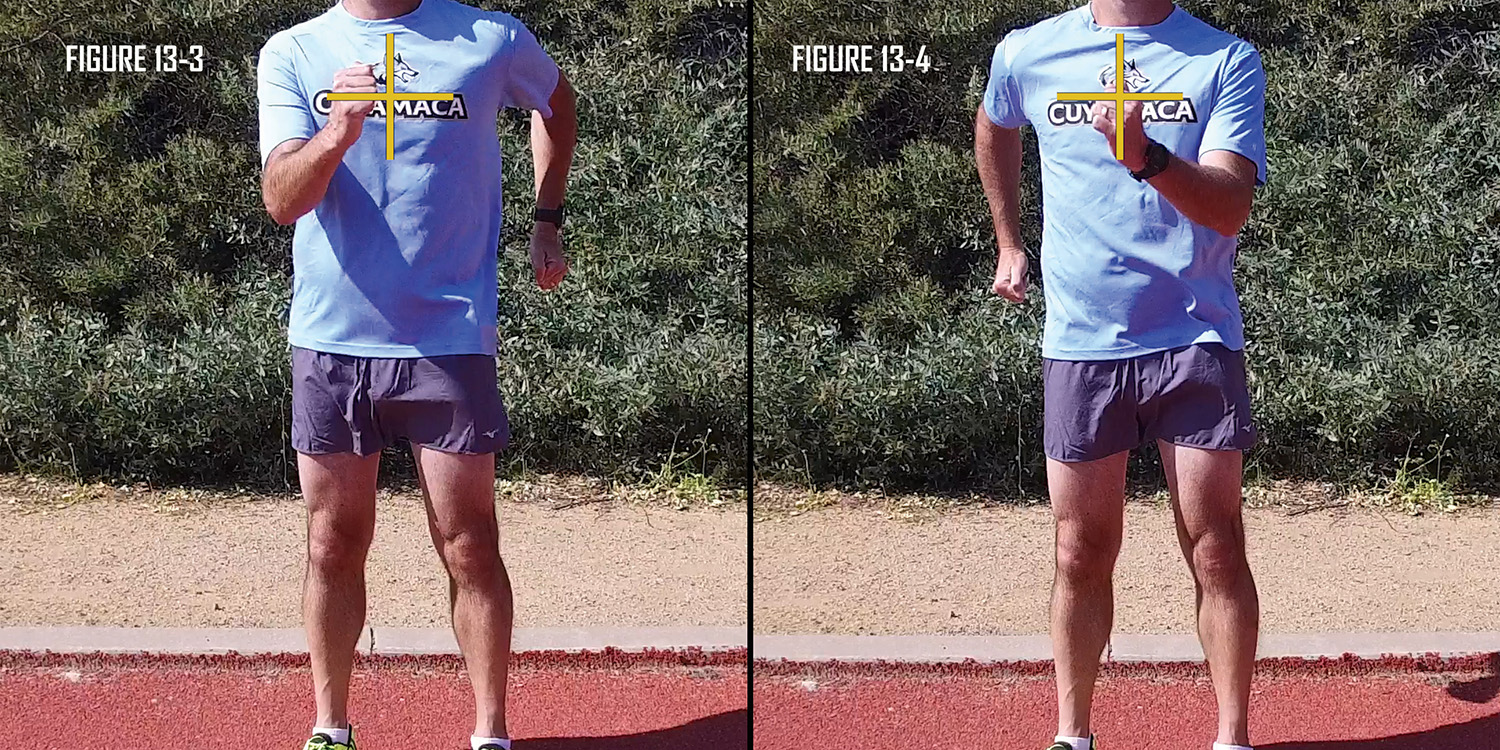

A side effect of rotating your hips forward is that your feet land in a straight line. Therefore, when you perform the Straight Line Walking drill by literally race walking along a straight line, your tendency to sway outward with your hip is reduced.
Body Position
This drill is performed while race walking.
Steps
- Race walk along a straight line, such as a lane divider of a track (Figures 9-1 & 9-2).
- As you walk, focus on your hips, reaching forward as the advancing leg swings forward.


The first 10% of the stride is most important. It’s what helps differentiate a race walker from a speed or health walker. It focuses on heel strike with the toe pointed up. We call it the Foot Plant drill and you must master it before progressing forward.
Steps
- Start by standing with your weight on your rear foot (Figure 3-3).
- Swing your other leg forward (Figure 3-4) from the knee until it fully extends.
- As you do, land with your foot slightly in front of the body, with your toes up and the knee straightened (Figure 3-5).
- Transfer all your weight to that leg (Figure 3-6).
- While virtually standing in place, rock back and forth from one foot to the other emphasizing the heel strike.
- Note that the knee does bend when you rock back.
- Repeat this exercise for both legs.
